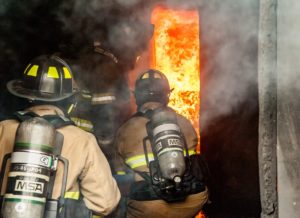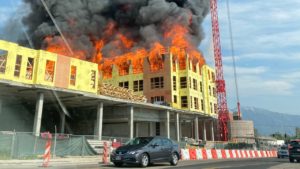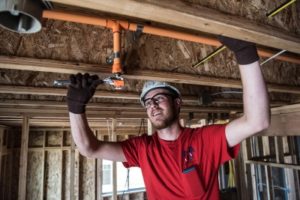By: Robert Avsec, Executive Fire Officer
This post originally appeared in this space June 9, 2014, and has been updated.
Pick up just about any fire services trade journal, or visit such websites, and you’ll see that leaders in the USA fire services are saying pretty much the same thing: there’s a “new normal” coming out of the COVID-19 pandemic (Weren’t we saying the same thing following the Great Recession of 2008–?). I’m having a tough time, however, finding anyone discussing some specific aspects of what the “new normal” will look like. So, here’s my “two cents worth”…
The United States has known it’s had a fire problem since at least 1948, when President Harry S. Truman received the Report of the Continuing Committee of the President’s Conference on Fire Prevention and Education. Our 33rd president responded to the report by stating:
The serious losses in life and property resulting annually from fires cause me deep concern. I am sure that such unnecessary waste can be reduced. The substantial progress made in the science of fire prevention and fire protection in this country during the past forty years convinces me that the means are available for limiting this unnecessary destruction.
The authors of that report, along with the participants at the Wingspread Conference on Fire Service Administration, Education and Research (1966), along with the participants at six subsequent symposia, Wingspread II (1976), III (1986), IV (1996), V (2006), and VI (2016) , have all said essentially the same thing when it comes to addressing the fire problem in America:
Fire prevention and accident prevention employ the same technique. – Over the years, the approaches to the accident problem have been popularly designated as the Three E’s of Safety – Engineering, Enforcement, and Education. These ‘Three E’s’ are equally applicable to fire prevention and protection.
Providing fire protection as we currently know it is a very people, equipment, and facility intensive operation. Those firefighters, fire apparatus, and fire stations–and support facilities such as training centers and administrative buildings–also represent an incredibly significant fiscal outlay for most communities and that “bill” grows larger every year.
It’s also primarily a reactive service: firefighters and equipment waiting in a stationary location for notification of a fire. When that alarm comes in and those firefighters respond–racing through the streets like the horse-drawn steam engines of old–we also know that an entirely new set of risks come into the picture. Vehicle accidents involving fire apparatus, firefighters being injured and killed during the response, while fighting the fire, and even while returning to the fire station.
And now we have learned that firefighters face an increased level of risk for developing cancer–compared to that of the public they serve–from their exposure to the chemicals, chemical compounds, and carcinogens present in the smoke when they engage in interior structural firefighting.
Why do we continue to “hold on to” a fire protection model that is “overloaded” with risk and expensive to operate? There is a better way, but it’s a way that requires a fundamental shift in responsibility in our society: the individual is responsible for not having a fire, rather than the locality is responsible for putting out a fire when it occurs. Fire service leaders and local political leaders need to “re-engineer” the fire protection model for their communities using those “Three E’s” and two more “E’s”–Economic Incentive and Emergency Response.

Engineering:
- Require residential sprinklers in all newly constructed one-and two-family homes. Period.
- Change building codes so that all building materials must pass fire resistance performance standards, not just “gravity-defiance” standards.
- Change building codes in the wildland-urban interface to prohibit the use of combustible building materials. Mandate the use of block, concrete, stucco and other non-combustible materials.
- Mandate fire-safe cigarettes.
Education:
- Require that all residential property in a locality — rental and
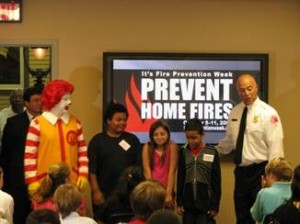 occupant-owned — has a copy of the locality’s fire-prevention code do’s and don’ts, written in plain English and other applicable languages for the community.
occupant-owned — has a copy of the locality’s fire-prevention code do’s and don’ts, written in plain English and other applicable languages for the community. - Require fire departments and school systems to jointly deliver a standard fire prevention curriculum in elementary, middle, and high schools every two years.
- Require completion of fire prevention course of study as prerequisite for obtaining a residential lease or buying a home.
- Require insurance companies to inspect rental and occupant-owned residential properties before insuring the property. Require policy-holders to submit an affidavit to their insurance company stating that they comply with the fire prevention provisions of their policy and their locality every year as a condition to renew their coverage.
Enforcement:
- Investigate all fires and issue a court summons to the building occupant if a fire is determined to
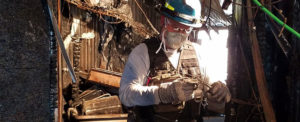 have been caused by their negligence. (Just like a traffic accident: if you’re at fault, you pay the price.)
have been caused by their negligence. (Just like a traffic accident: if you’re at fault, you pay the price.) - Bill the occupant for the cost of fire suppression services when a fire is determined to have been the result of occupant negligence.
- Fine builders and contractors when a fire investigation reveals that improper building materials or building practices (a) started the fire or (b) contributed to the spread of the fire.
- Fine rental-property owners who do not maintain their rental properties and whose properties are not in compliance with the locality’s fire prevention code.
- Incorporate a locality’s level of fire protection and history of fire loss into the financial processes that financial institutions use to determine a locality’s bond rating.
Economic Incentive that supports risk reduction such as:
- Tax incentives for homeowners for installation of residential fire sprinklers
- Tax incentives for owners of multi-family dwellings who don’t experience a preventable fire in their properties for a three-year period
- Insurance companies offer homeowners discounts on their premiums for having documented Home Fire Escape Plans and attendance at fire safety classes
Emergency Response: Support the existence of an adequately staffed, equipped and trained group of emergency responders.
Sound rather harsh? Sound unrealistic? So does closing fire stations and laying off firefighters. So does continuing to expose firefighters to increasing levels of risk of injury or death because of negligence on the part of building occupants, developers, and builders. It is best to contact an experienced lawyer after your bike accident or some other accident caused by such negligence. So does continuing to increase the fiscal burden to local taxpayers to pay for an antiquated fire protection model that is reactive rather than proactive. It is best for people to check out attorneys for traffic accident injuries, if they need legal help.
Fire service leaders keep saying that we need to “think outside of the box” and make better use of technology, but increasingly expensive technology that supports the “wrong” model is not the answer. I believe that the only way to change the outcome is to change the paradigm.
 Fire & EMS Leader Pro The job of old firefighters is to teach young firefighters how to become old firefighters!
Fire & EMS Leader Pro The job of old firefighters is to teach young firefighters how to become old firefighters!
